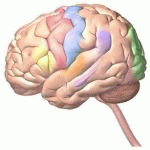Neurology
|
19 december 2014 12:51:11 |
| Intention tremor and deficits of sensory feedback control in multiple sclerosis: a pilot study (Journal of NeuroEngineering and Rehabilitation) |
|
Tweet Background:
Intention tremor and dysmetria are leading causes of upper extremity disability in Multiple Sclerosis (MS). The development of effective therapies to reduce tremor and dysmetria is hampered by insufficient understanding of how the distributed, multi-focal lesions associated with MS impact sensorimotor control in the brain. Here we describe a systems-level approach to characterizing sensorimotor control and use this approach to examine how sensory and motor processes are differentially impacted by MS.
Methods:
Eight subjects with MS and eight age- and gender-matched healthy control subjects performed visually-guided flexion/extension tasks about the elbow to characterize a sensory feedback control model that includes three sensory feedback pathways (one for vision, another for proprioception and a third providing an internal prediction of the sensory consequences of action). The model allows us to characterize impairments in sensory feedback control that contributed to each MS subject`s tremor.
Results:
Models derived from MS subject performance differed from those obtained for control subjects in two ways. First, subjects with MS exhibited markedly increased visual feedback delays, which were uncompensated by internal adaptive mechanisms; stabilization performance in individuals with the longest delays differed most from control subject performance. Second, subjects with MS exhibited misestimates of arm dynamics in a way that was correlated with tremor power. Subject-specific models accurately predicted kinematic performance in a reach and hold task for neurologically-intact control subjects while simulated performance of MS patients had shorter movement intervals and larger endpoint errors than actual subject responses. This difference between simulated and actual performance is consistent with a strategic compensatory trade-off of movement speed for endpoint accuracy.
Conclusions:
Our results suggest that tremor and dysmetria may be caused by limitations in the brain`s ability to adapt sensory feedback mechanisms to compensate for increases in visual information processing time, as well as by errors in compensatory adaptations of internal estimates of arm dynamics. |
| 73 viewsCategory: Neurology |
 Sensory neurons: The sense in reprogramming (Nature Reviews Neuroscience) Sensory neurons: The sense in reprogramming (Nature Reviews Neuroscience)Trigeminal isolated sensory neuropathy (TISN) and FOSMN syndrome. Despite a dissimilar disease course do they share common pathophysiological mechanisms? (BMC Neurology) 
|
| blog comments powered by Disqus |
MyJournals.org
The latest issues of all your favorite science journals on one page
The latest issues of all your favorite science journals on one page



